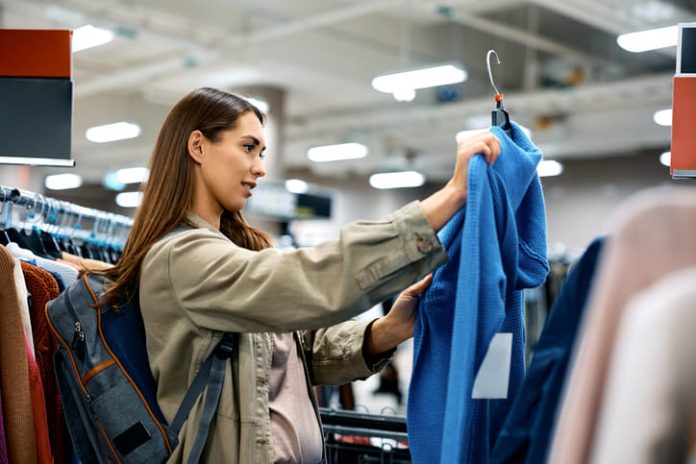Finding great deals on second-hand goods can significantly enhance a budget-conscious lifestyle. Thrifting and shopping at second-hand stores often yield treasures at a fraction of the original price. With a little patience and know-how, anyone can uncover unique items that blend affordability with quality.
Online platforms and local thrift shops are excellent avenues for discovering these hidden gems. Buyers can find everything from vintage clothing and furniture to rare collectibles, making the hunt both exciting and rewarding. The thrill of the find is not just about saving money; it also encourages sustainable shopping practices.
Embracing second-hand goods not only supports local businesses but also promotes a more eco-friendly approach to consumerism. By choosing previously owned items, individuals contribute to reducing waste and give a second life to products that may otherwise end up in landfills. This pursuit offers a sense of fulfillment beyond the savings.
Understanding the Second-Hand Market
The second-hand market has grown significantly, providing consumers with diverse options and cost-saving opportunities. Buyers can find unique items, reduce waste, and enjoy lower prices compared to new goods.
Benefits of Buying Second-Hand
Purchasing second-hand goods offers several advantages. First, it can significantly lower expenses. For example, buying used clothing or furniture can save consumers up to 50% compared to buying new.
Additionally, purchasing second-hand supports sustainability. It extends the lifecycle of products, minimizing waste and reducing the demand for new production. This environmental impact attracts eco-conscious consumers.
Buyers also often discover rare or vintage items that are no longer available in standard retail settings. Thrift stores or online marketplaces can offer one-of-a-kind finds, enhancing both style and individuality.
Types of Second-Hand Goods Available
The range of second-hand goods is broad and varied. Common categories include clothing, electronics, furniture, and collectibles.
Clothing often encompasses everything from casual wear to high-end fashion. Many thrift shops feature limited-edition or designer pieces at accessible prices.
Electronics can include refurbished gadgets, such as smartphones, laptops, and cameras. These items provide functionality at a fraction of the original cost with the added benefit of reduced electronic waste.
Furniture can range from antique pieces to modern designs. Buyers can furnish their homes affordably while achieving a unique aesthetic.
Finally, collectibles, such as vintage toys and books, hold both sentimental and financial value, appealing to a wide array of collectors and enthusiasts.
Strategies for Finding the Best Deals
Finding great deals on second-hand goods requires a strategic approach. Timing, negotiation, and leveraging various platforms can significantly impact the quality and price of items. The following strategies provide practical tips for buyers seeking the best bargains.
Timing Your Purchase
Timing can significantly affect the availability and price of second-hand items. Seasonal changes often lead to increased turnover in thrift stores, with spring cleaning and holiday seasons prompting many to donate goods.
Buyers should also consider specific days when stores restock items. Early mornings or weekday visits tend to yield better finds. Being aware of local garage sales or estate sales can open additional opportunities. Subscribing to community bulletin boards can help stay informed about these events.
Negotiation Techniques
Negotiation is a valuable skill when purchasing second-hand items. Many sellers expect some level of haggling, especially in flea markets or yard sales.
Buyers should start with a lower, reasonable offer and be open to discussing the price. Maintaining a friendly demeanor can foster goodwill, often leading to better deals. It is also advisable to research the item’s value beforehand, ensuring an informed negotiation.
Buyers might also consider bundling multiple items for a discount. Many sellers appreciate the prospect of making a larger sale and may offer a reduced price for purchasing multiple goods.
Online Platforms and Local Resources
Online platforms have revolutionized the way second-hand goods are bought and sold. Websites such as eBay, Craigslist, and Facebook Marketplace offer vast selections at varying price points.
Buyers should utilize search filters to help narrow options effectively. Setting alerts for specific items can also ensure they don’t miss a good deal.
Local resources are equally valuable. Thrift stores and consignment shops often have unique finds at lower prices. Buyers should explore regular visits as inventory changes frequently. Using apps that notify users about nearby sales or special promotions can also enhance the shopping experience.
Evaluating Second-Hand Goods
When buying second-hand goods, it is essential to assess the item’s condition, verify its authenticity, and understand the return policies or guarantees offered. Each of these factors contributes significantly to making a smart purchase.
Condition Assessment
A thorough condition assessment is crucial for determining the value of a second-hand item. Buyers should examine the product for any visible signs of wear, such as scratches, dents, or fading.
For electronics, test functionality by checking if all features work properly. For furniture, assess the structural integrity and visible damage.
A checklist can be beneficial:
- Visible Damage: Inspect for scratches, cracks, or stains.
- Functionality: Test all operating features, especially for electronics.
- Age Indicators: Look for signs of wear that reflect the item’s age.
Taking time to appraise the condition ensures a worthwhile investment.
Authenticity Verification
Ensuring the authenticity of a second-hand item is vital, particularly for luxury goods. Counterfeit products are prevalent in the second-hand market.
Buyers should research specific details pertaining to the brand. Key elements include:
- Serial Numbers: Verify against official databases.
- Logos and Markings: Check for correct placement and quality.
- Documentation: Request original receipts or certificates of authenticity.
Using online resources can help identify fraudulent items. When in doubt, consultation with experts is recommended.
Return Policies and Guarantees
Clearly understanding return policies and guarantees helps protect buyers. Not all sellers offer the same level of assurance.
Factors to consider include:
- Return Window: How long is the period for returns?
- Condition Requirements: What state must the item be in for a return?
- Refund vs. Exchange: Are buyers entitled to refunds, or only exchanges?
Buyers should ask sellers directly about their policies. A clear return policy can enhance buyer confidence and reduce risk.





































